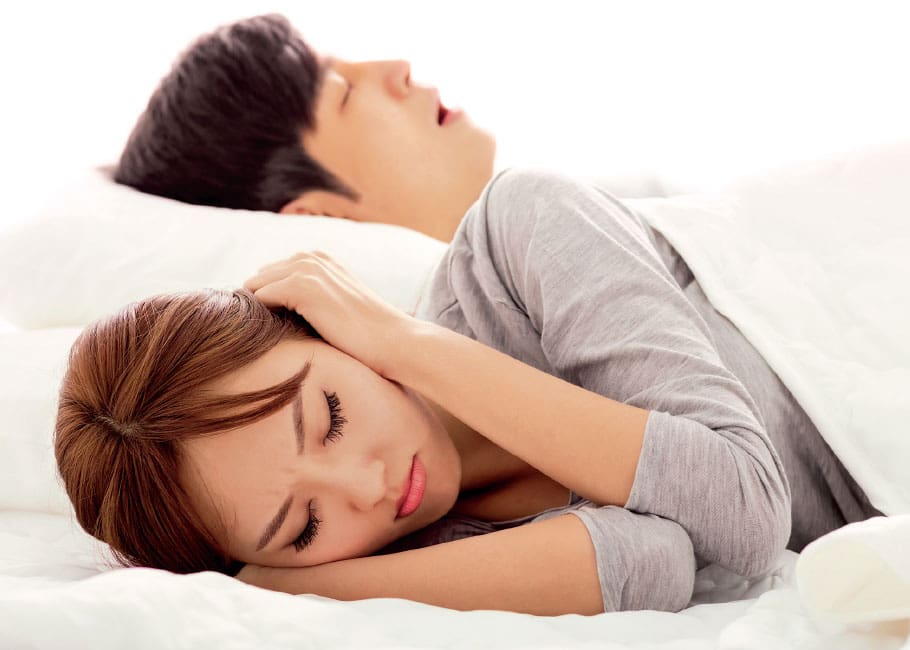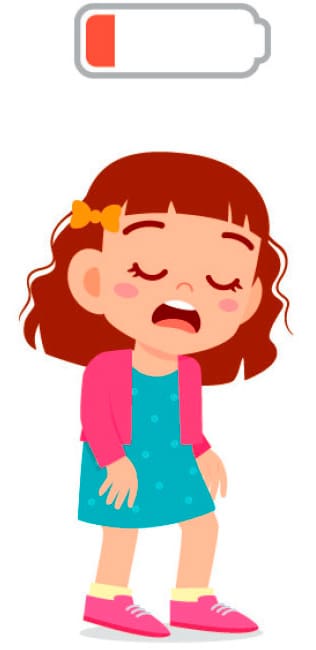
Snooze alarm
More than just a noisy nighttime annoyance, sleep apnea can cause a variety of serious health issues
Snoring that is loud enough to wake your bed partner and punctuated with gasping sounds could be a warning sign of obstructive sleep apnea (OSA). OSA occurs when muscles in your throat relax during sleep and your airway is narrowed or closed, momentarily cutting off breathing and lowering the blood oxygen level.
According to the 2018 Canadian Health Measures Survey, 6.4% of Canadians ages 18 to 79 said they had been diagnosed with sleep apnea (up from a 2009 survey, when 3% reported they had the condition).
“Daytime tiredness can be caused by sleep apnea, leading to reduced quality of life,” says Dr. Najib Ayas, medical manager of the University of British Columbia Hospital Sleep Laboratory in Vancouver. “But in individuals with more substantial disease, you are worried about long-term risks in terms of cardiovascular disease and dementia as well.”
In addition to the most serious cardiovascular complications such as heart attack, stroke and hypertension, sleep apnea also has been linked to increased risk for diabetes and glaucoma.
Symptoms beyond snoring
Ayas lists the cardinal signs of sleep apnea as disruptive snoring, witnessed apneas—when breathing temporarily stops during sleep—and daytime tiredness. Less obvious signs and symptoms include dry mouth, night sweats, nighttime urination, morning headaches, nighttime reflux and teeth grinding.
Ayas also notes that men are more likely to be diagnosed with sleep apnea than women. Other risk factors include older age, obesity and a family history of the condition. People with hypothyroidism, cardiac disease and diabetes also tend to have higher rates of sleep apnea, he says.
Treatment options
Dr. Charles Samuels, medical director of the Centre for Sleep & Human Performance in Calgary, Alberta, says a sleep study is required for individuals whose daytime functioning or nighttime sleep is impaired. Samuels explains that continuous positive airway pressure (CPAP) therapy, which delivers steady air pressure through a hose and mask or nosepiece, remains the gold standard for people with moderate to severe sleep apnea.
The challenge is that even though CPAP machines have become quieter and mask options greater, roughly 25% of individuals quit using the device or remove their masks during the night because of anxiety, claustrophobia or other reasons.
Surgical options for people with severe OSA who cannot tolerate CPAP include tonsil removal, soft palate reduction or tongue suspension techniques. Not every person is a candidate for these procedures. Sleep endoscopy, a diagnostic procedure done under anesthesia, can help identify whether surgery, and what kind, would be appropriate.
For milder and some moderate cases of sleep apnea, dentist-supplied custom oral appliances that hold the lower jaw forward and prevent the tongue from falling back and blocking the airway can be an alternative first-line therapy, as are weight loss and increased exercise.
While severe sleep apnea is linked to serious health conditions, Samuels says clinical treatment decisions are based on improving quality of life by eliminating excessive daytime sleepiness and other symptoms. “That plays a huge role in the decisions to treat, not treat, what to use for treatment, etc.”

Sleep apnea in children
A child who chronically snores is sounding a wake-up call.
“A child who sounds like an adult when snoring would raise a red flag and should prompt evaluation or at least a discussion with their pediatrician,” says Dr. Michael Cohen, assistant professor of otolaryngology, head and neck surgery, at Boston University School of Medicine.
Pediatric sleep apnea has been linked to ADHD (attention-deficit/hyperactivity disorder), bedwetting, sleepwalking, obesity and developmental issues. Because enlarged tonsils or adenoids are typically the cause of pediatric sleep apnea, surgically removing those tissues cures the sleep disorder in most children, Cohen says.—ADP
Getting sleep tested
A sleep test is a necessary step to determine if you have sleep apnea.
A home test uses a nasal cannula to detect breathing patterns and monitor nasal airflow, while an elastic belt measures respiration and a fingertip sensor records oxygen levels and pulse rates.
During an in-lab sleep study, sensors measure brain waves, eye movements and muscle tone during sleep stages. This monitored study can diagnose mild sleep apnea and other sleep disorders. Children must have an in-lab study.—ADP
Costco Connection: If you have questions about sleep apnea, you can consult with your local warehouse pharmacist.

